I recently shared my favorite spelling hacks as well as discussed why teaching phonics is not enough. In this post, I go through tips for spelling homophones by going through a few tricks to remember which one to use and how to spell it correctly. In addition, I also go over a few sight words, some of which are connected with homophones when spelling them.
What is a Homophone?
Oxford dictionary defines a homophone as
“each of two or more words having the same pronunciation but different meanings, origins, or spelling.”
To, two, and too is an example. I will get further into these specific words as we work through spelling homophones below. Please note that for the purpose of this blog post, any definitions cited will be directly from Oxford dictionary.
*Note: This post contains affiliate links, meaning that I may make a commission on purchases made at no extra cost to you. Thank you for your support!

Here and Hear
When teaching spelling, I try to first focus on 3 letters and point them out within a word if possible. The most commonly used spelling is here, used to indicate “in, at, or to this place or position.” Since most people know how to spell ‘her,’ I start with that. Here is her with an e on the end.
As a side note, once an individual can spell here correctly, they also should be able to spell there and where since these words also have here in them. “Where is that?” “Here it is!” or “It is over there!”
For the other hear, I start with spelling ‘ear.’ Once an individual knows how to spell ear, the hear that means you can hear with your ear is easily spelled by just adding an h to the front. Definitely, point out that this one has the word ear in it since that is the organ used to hear with.
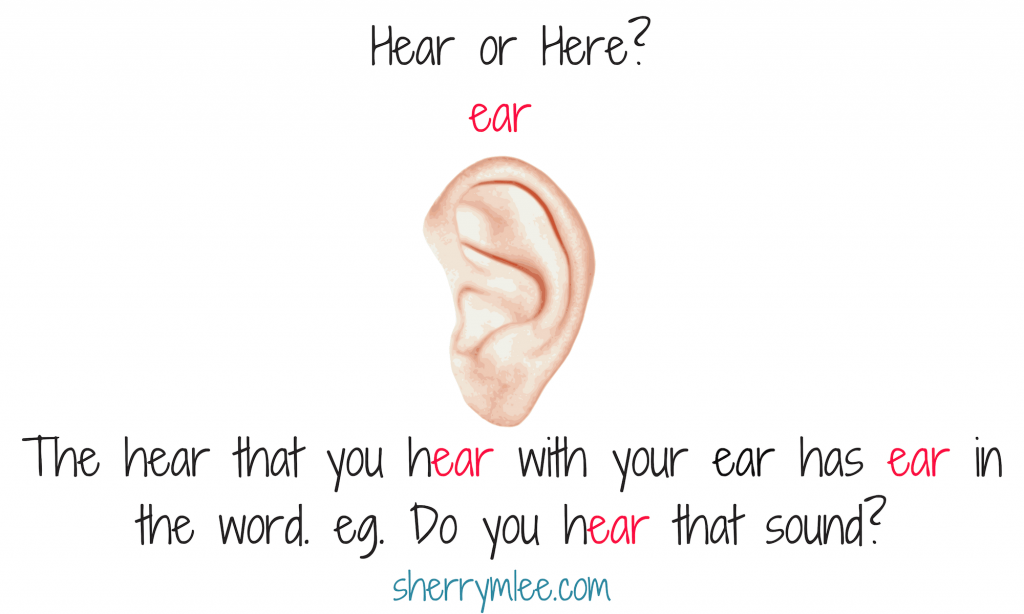
Now that this is pointed out, it likely seems obvious. However, don’t feel bad if you are one of the majority that has never noticed this. In my experience, most people haven’t. 🙂
There, Their, and They’re
As demonstrated above, there has the word here in it. As for their, it means “belonging to or associated with the people or things previously mentioned or easily identified.” In a nutshell, it indicates something that belongs to them. It is spelled starting with ‘the’ and adding ‘ir’ at the end. If it is easier for the individual, make something up together that the i and r can stand for to help them remember those two letters.
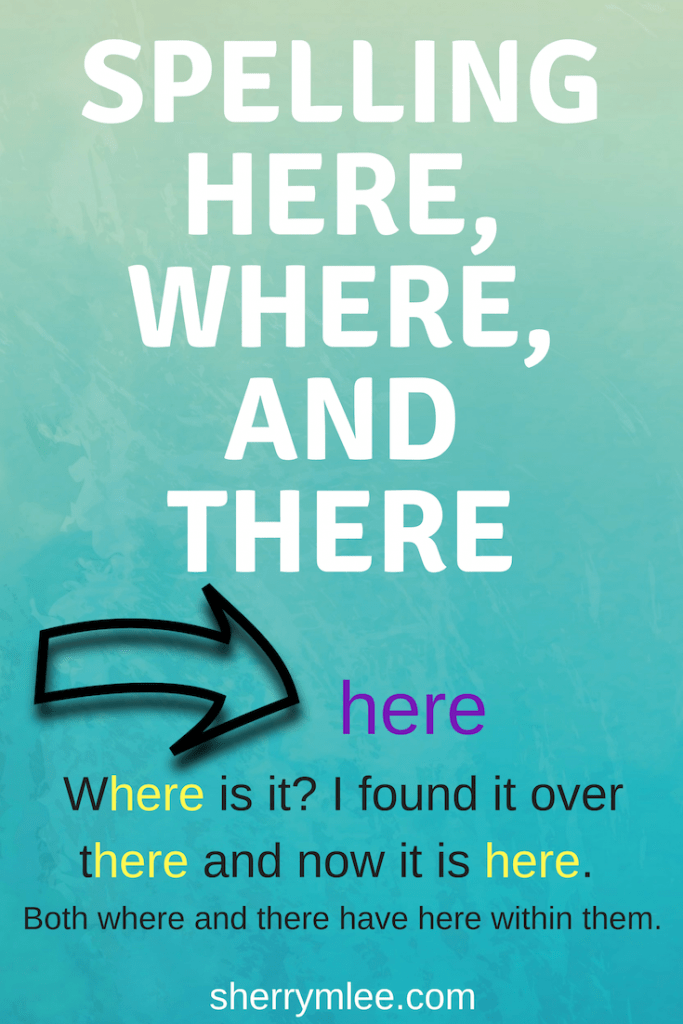
The other they’re is the contraction for they + are. The rule for a contraction is the apostrophe is placed where the omitted letter(s) would be. In the case of they’re, it is the ‘a’ in the word ‘are’ that is removed when the two words are contracted into one. Therefore, they + are becomes they’re.
To, Two, and Too
To is the most commonly used spelling and it should be as it is the most frequently used. We use to when indicating that we are going to a place, when stating direction as in something is found to the left of that, and so on.
Two always refers to the number 2. My favorite way to remember this is referring to twins as this word indicates two and starts with tw. Once the understanding is there that the number two starts with tw as in twins, the spelling of two may be easier to remember.
Too is an adverb that is defined as “to a higher degree than is desirable, permissible, or possible; excessively.” Too can often be replaced by the word ‘very.’ Examples of using too include the following: He drove too fast. The cat ate too much.
The other definition of too is “in addition, also.” This too can be replaced by also or as well. An example of using this too is when our children say, “I want to go, too!”
No and Know
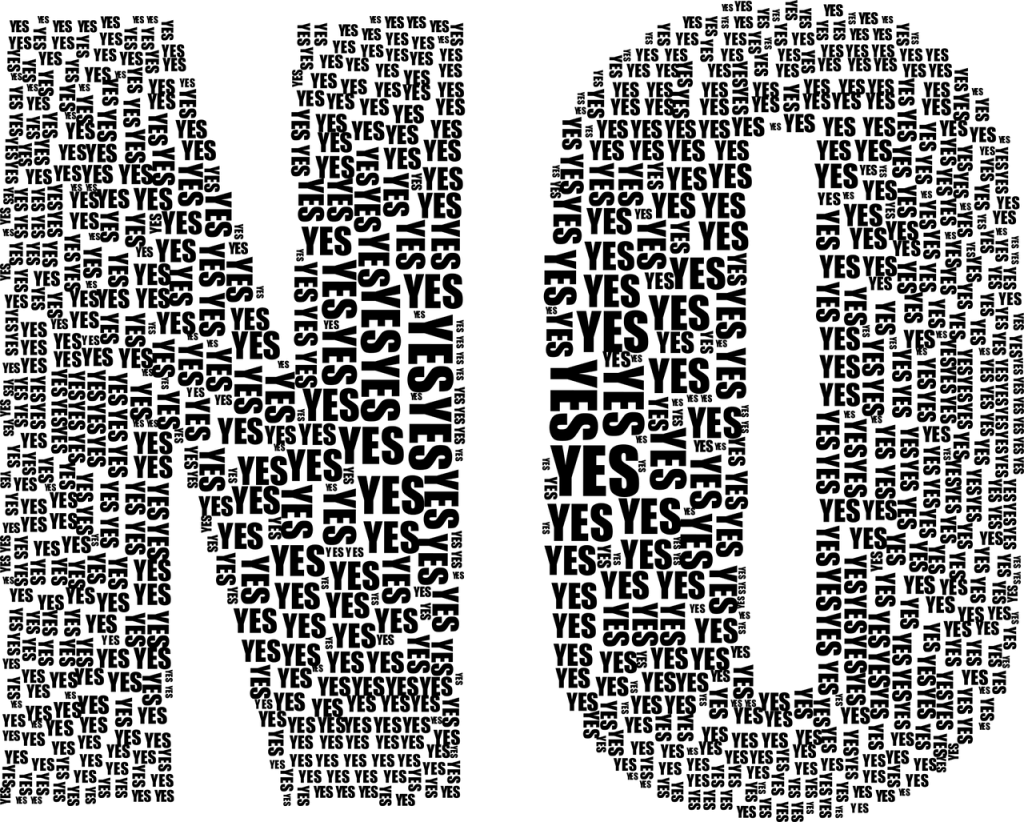
I’m not sure why, but I know my own children have never had an issue with saying no or spelling no. “No, it is not my turn to do the dishes… N-O!” Maybe this scenario has never happened in your house? If not, please share your secret! No is used to give a negative response. It is also used to mean “not any” as in “There are no pencils in this drawer.”
It tends to be the other know that trips people up when spelling it. This know comes from the word knowledge. It means one is aware of something or familiar with someone. “I know the answer!” or “I know that person from somewhere.”
New and Knew
New is used to describe something that either was not existing before or is recently acquired for the first time. For example, “The new song by that artist was just released.” or “I have a new bike.”
The other knew is the past tense of know from the word knowledge as previously described. “He knew the answer to the question” is an example.
Hey and Hay
If an individual knows how to spell they, then this one will be easy. The ‘hey’ to use when greeting someone is spelled the same as the hey that is seen in the word ‘they.’ The other hay is the hay that horses or livestock eat.
For and Four
My experience with spelling these homophones is that individuals will overuse the f-o-r spelling since it is certainly the most commonly used one. However, the other four refers to the number 4. There are four letters in this spelling, which matches the number being counted.
When, Then and What
Even though these words aren’t homophones, they certainly are frequently used sight words. As stated earlier in this post, I try to focus on 3 letters when possible for commonly misspelled sight words.
I am not sure about you, but I have frequently seen ‘what’ spelled as ‘wat.’ Because of this, I start with spelling ‘hat.’ The word hat can easily be sounded out. Once hat is easily spelled, point out that what is just the word hat with a w on the front of it. There is a hat in the word what.
Then and When each end with hen. The definition of hen is “a female bird, especially of a domestic fowl.” Hen is a phonetically spelled word so can easily be sounded out. Once hen is spelled correctly, it becomes easy to spell then and when since both words have hen in them.
Could, Would, Should
There are many strategies taught in school to try to help individuals remember the o-u-l-d when spelling could, would, and should. I recently came across the video below and have to admit that it is my personal favorite strategy for spelling these sight words. Watch it for yourself and see what you think. It is cheesy, but that may be why it sticks!
Adding Movement to Spelling
You know your child best. Does your child benefit from movement when learning? If so, be sure to add some movement when working on spelling. One way to do this is to lightly do a karate chop for each letter when spelling while moving down the opposite arm. Each karate chop stands for a letter and, when done the spelling, go back and wipe down the arm while saying the word that was just spelled.
Another way can be marching while saying each letter in a word then jumping and saying the entire word that was just spelled when landing the jump. These kinds of movements help individuals to remember their learning. This is especially true for the kinesthetic learner.
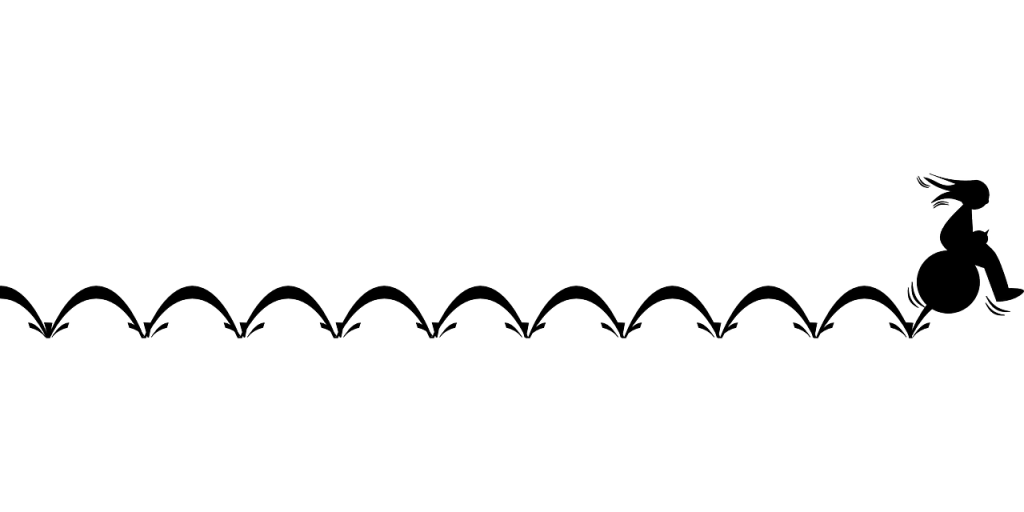
Resources and Additional Tips and Tricks for Teaching Spelling
When working on spelling, it is important that it is done in a meaningful way. If simply working on memorizing word lists, the knowledge may not transfer to one’s actual writing. Some recommended resources for teaching spelling are as follows:
How to Teach Spelling by Laura Toby Rudginsky. This resource is good for those wanting to use a multi-sensory approach to spelling. However, one con is that it can take some time to work through the organization of this resource.
Daily Word Ladders by Timothy Rasinski are available for Grades K-1, 1-2, 2-3 and 4-6. They can also be bought as an entire set. What is particularly great about these resources is that they not only work on spelling and phonics but help to improve vocabulary as well through the riddles that are to be solved when moving from one word to another. I highly recommend these resources, especially if you have a child that loves to solve riddles!
Explode the Code by Nancy Hall is an older resource, but still great in my opinion especially if your child struggles with phonics and needs that broken down. Each book builds on the other, but I would recommend starting with Book 1 if there is a struggle with phonics and move through the set from there as each book builds on the other.
If you would like more tips and tricks for teaching spelling, please check out my posts about my favorite spelling hacks and why teaching phonics is not enough.
Summary
Spelling can be tricky for many individuals. It can be difficult to know which spelling to use when spelling homophones. Sight words can also be difficult to spell, especially when they cannot just be sounded out. Focusing on little tricks to help trigger the memory for how to spell certain words will often help. Adding movement can be another tool to help transfer the spelling knowledge into one’s long-term memory. Have some fun with it. If needed, try to come up with some other ways to help remember how to spell some of these commonly misspelled words.
How About You?
Are there any homophones that you frequently mix up when spelling? Do you know of any additional tips for spelling homophones or common sight words? Are there other words that I missed in this post that you or someone you know commonly misspell? Is there a specific rule or tip that has helped you that may also help others? Is there a resource that has helped you to effectively learn how to spell? Let me know in the comments below! 🙂
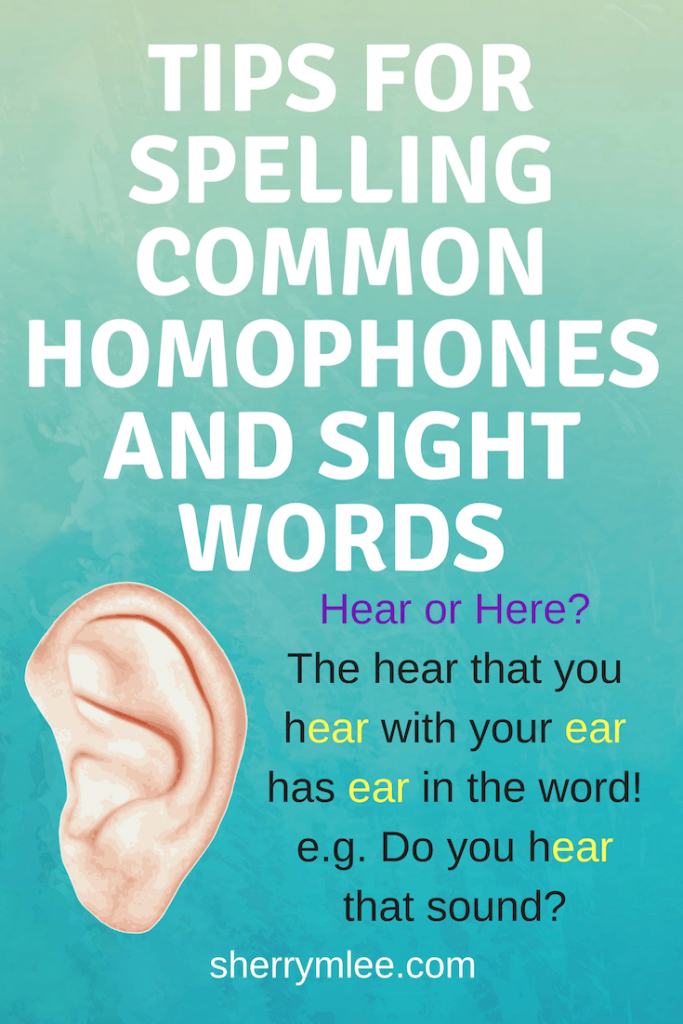





20 Comments
these tips are great for kids, but good for adults, too! i know plenty of adults who have 4-year degrees that still make these mistakes!
the one that’s hardest is affect and effect. (though, are they even true homophones?) those two get misused so much. one of the effects of having a tough language, eh? 😉
Haha, so true! Thank you for reading this, Amanda! 😀
This is very good! As a former TEFL teacher, I admire tips and games like this. Very helpful to children and language learners.
Awesome! I am so glad these are helpful to you. 🙂
Love all this information. Very helpful post!
That’s great, Tammy! I love when my posts are helpful to others. 😀
What amazing tips and tricks to help out with these stubborn spelling words! Your ideas are right on point and easy to follow. I adore the idea of incorporating movement with each letter. Thank you!
Thank you for the kind words, Shannon! 🙂
I’ve got a second (going on third) grader and I’ve been looking for ways to reinforce this idea with him – there’s more than one way to say “under where” is as far as we’ve gotten 😂 Great tips, thanks for the post!
Hahahaha, that would be an effective way to teach this as well. I love it! 😀
These are awesome tips! Bookmarking for when my daughter starts writing!
Thank you, Ariana! I am glad you will put them to use! 🙂
Great tips! Saving this for when my littles are a bit older. One of them is just about there!
Time goes quickly with these little ones. This will be useful before you know it. 🙂
As a teacher, homophones are always so tricky for kids (and adults). I love the trick for here and hear! It is a great way to remember the difference between the two. I am also a huge fan of adding movement to spelling 🙂
Thank you, Jamilyn! Movement certainly helps, especially with those tricky words. 🙂
This is absolutely amazing! Will definitely be using your tips when teaching my baby girl! 🙂 thanks for sharing !
Excellent! Thank you so much for checking these tips out. 🙂
This is so great! We really need work on spelling this summer in my house and I will definitely be using these tips! It’s funny how hard it is to teach things to someone else that are just habit for yourself. Thank you for these great tips!
Yes! As learners, we tend to transfer our knowledge into everyday habits without really reflecting on how we learned the information afterward. So glad these tips are useful to your family! 😀